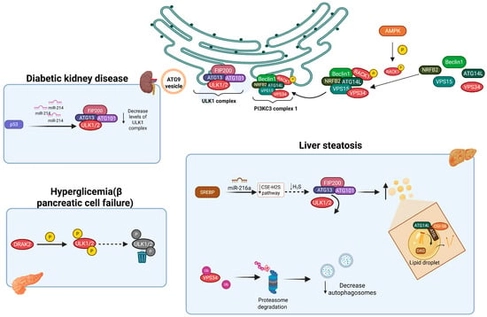- Review
The Role of Autophagy Genes in Energy-Related Disorders
- Berenice Franco-Juárez,
- Noemí Cárdenas Rodríguez and
- Luz Camacho
- + 6 authors
Autophagy is a cellular catabolic mechanism that facilitates the degradation of cytoplasmic components, thereby restoring energy homeostasis and mitigating cellular damage. This process functions as a housekeeping system, essential for maintaining organismal viability under stressful conditions. Numerous studies have highlighted the role of autophagy in regulating various physiological processes, including metabolic pathways. Notably, certain autophagy-related genes may play a relevant role in metabolic disorders, extending beyond their involvement in the autophagic process, and may offer potential therapeutic avenues for treating energy-related metabolic diseases. This review summarizes the roles of various components of each autophagic complex and the regulators involved in the autophagic process. In particular, it explores the intricate relationship between autophagy and several metabolic diseases, including type 2 diabetes mellitus (T2DM), obesity, and non-alcoholic fatty liver disease (NAFLD).
8 December 2025






